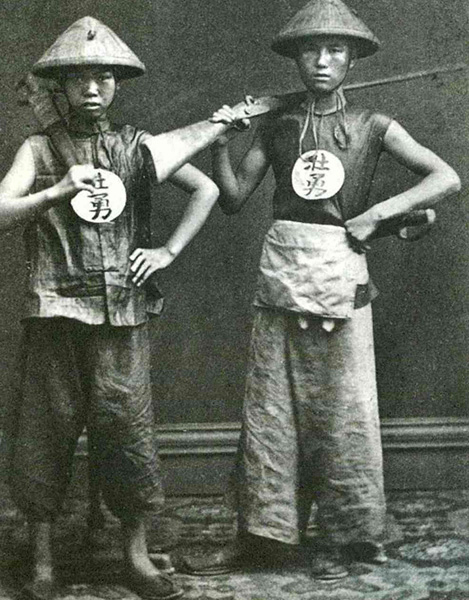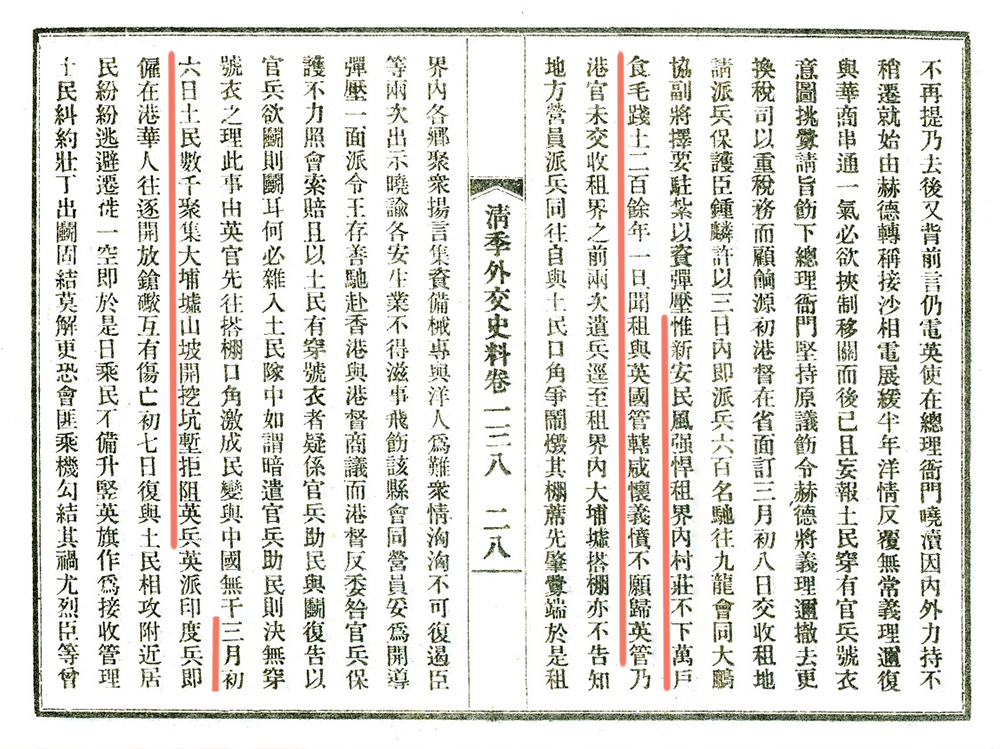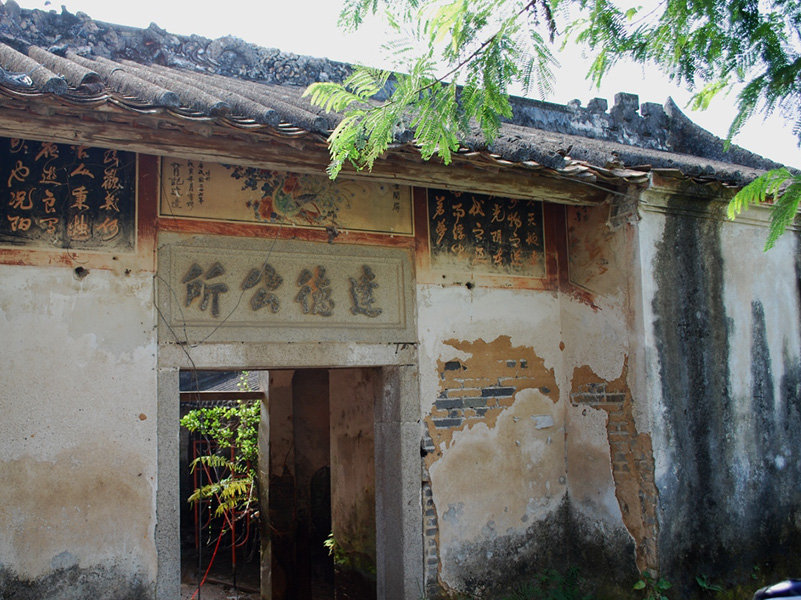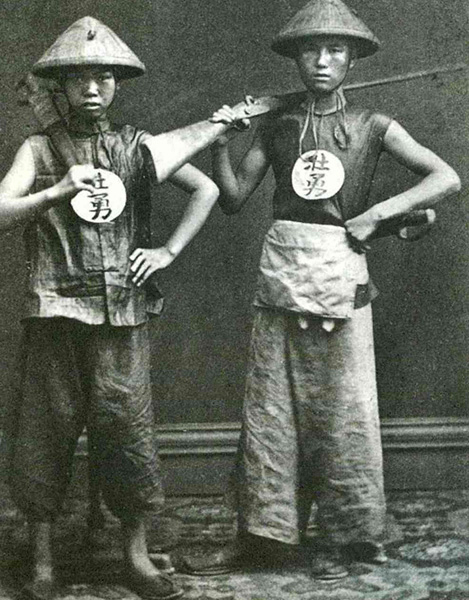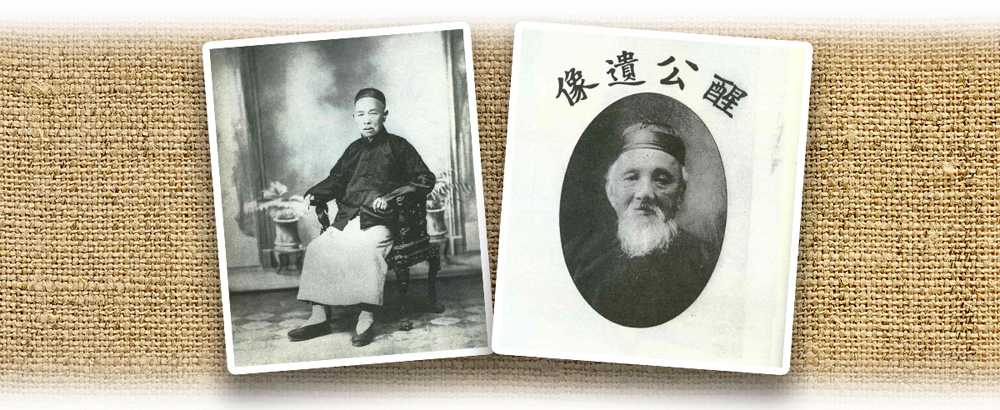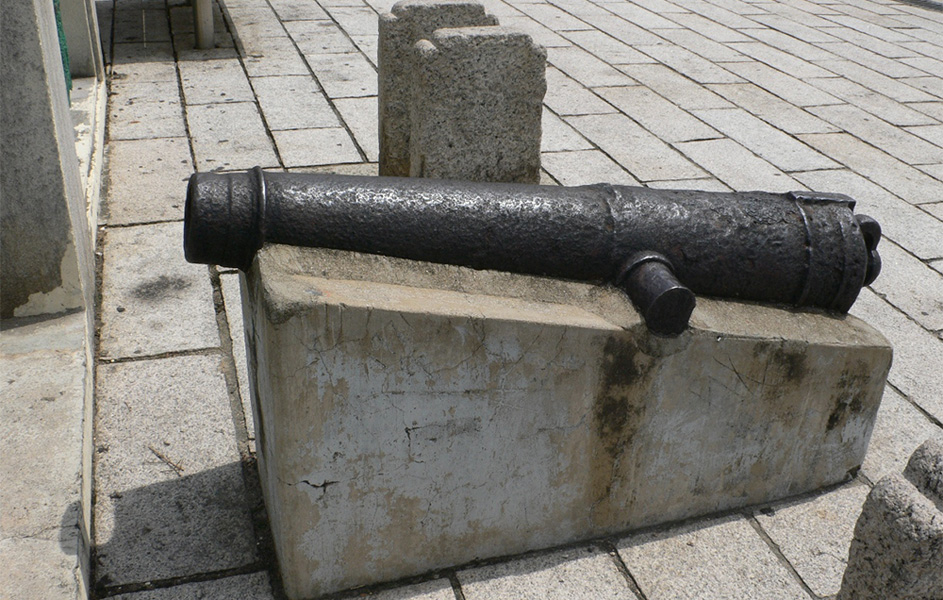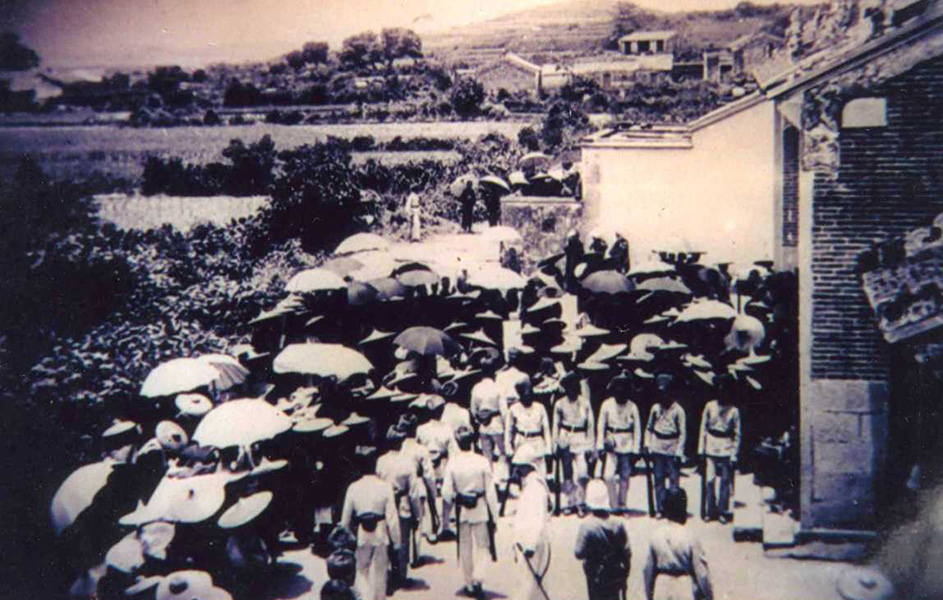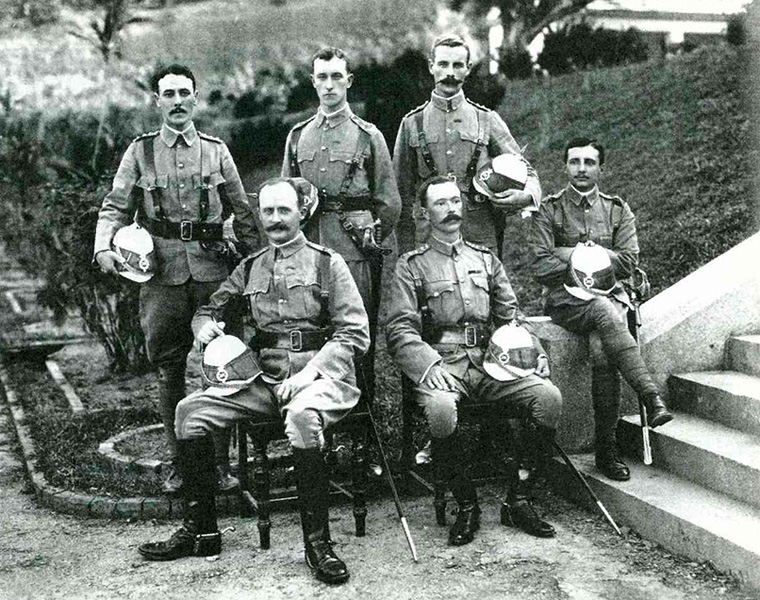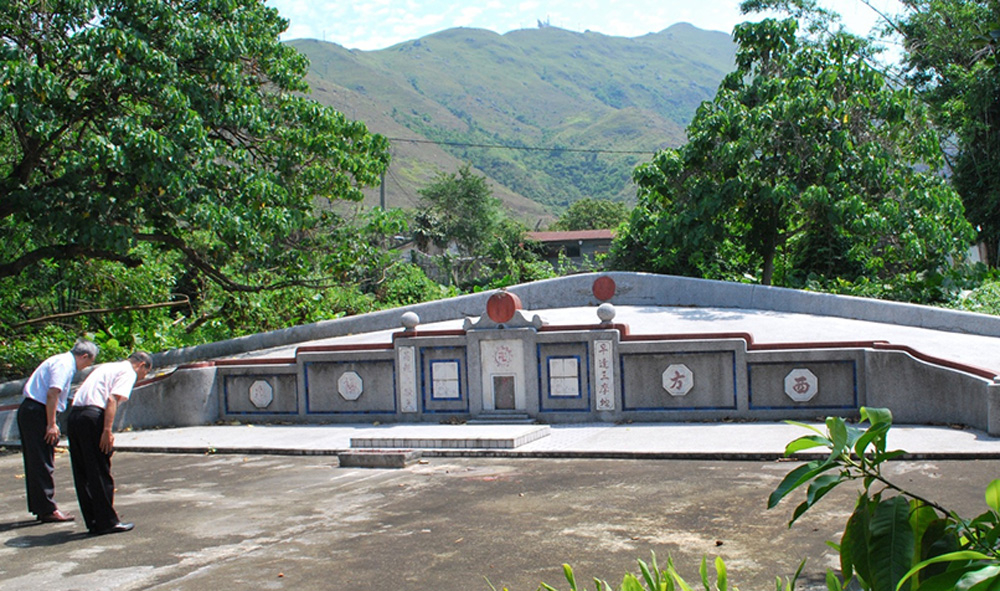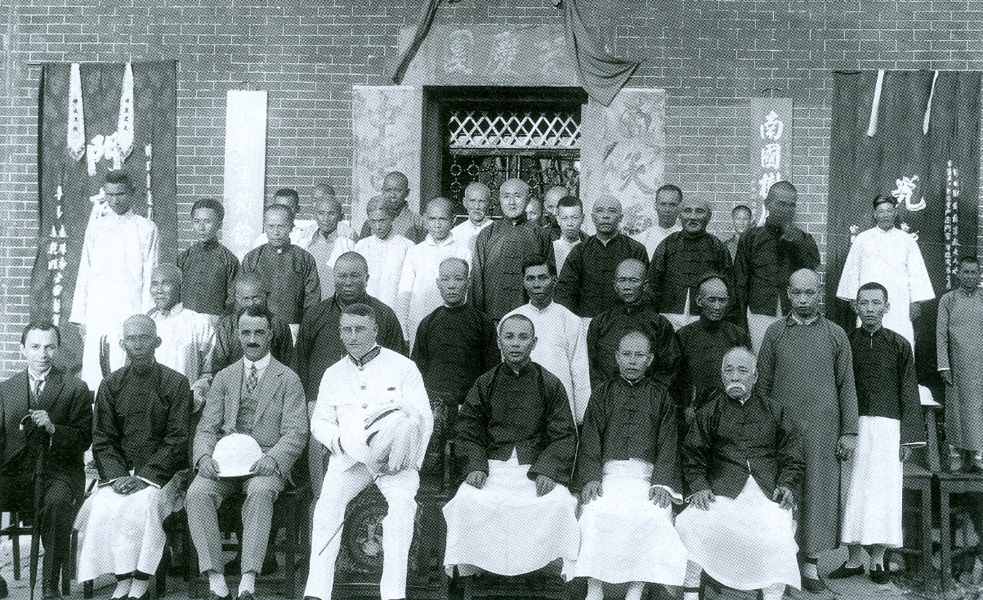In 1898, Britain signed the Convention Between Great Britain and China Respecting an Extension of Hong Kong Territory with the Qing government. The New Territories was leased to Britain for 99 years. In March 1899, Britain started taking over the New Territories. Worrying that the British would seize the land they relied on for their livelihoods, the villagers armed for the British’s forceful takeover under the leadership of the gentry. The resistance started on 14 April. On the 17 April afternoon, villagers bombarded the British barrack in Tai Po and ambushed the British troops in Lam Tsuen valley. They then attacked the enemy in Shek Tau Wai near Sheung Tsuen in Pat Heung the next day. Although the villagers fought ferociously, they were defeated in the end because of inadequate weapons and lack of formal military training and combat experience. In what later known as the “Six-Day War of 1899” that ended on 19 April, at least 500 villagers were sacrificed. As the Colonial Secretary Sir James Haldane Stewart Lockhart once pointed out that it would have been more difficult for the British to quell the resistance if the villagers had equipped with modern weapons. He commented on how fearless the villagers were when using primitive weapons to fight. To avoid further resistance, the British decided not to prosecute the villagers and worked with the gentry to manage the New Territories. They also returned the items seized during the resistance, including the iron gate of Kat Hing Wai Walled Village. The British rule over the New Territories became stable after that.
|
|
In 1899, how did the villagers in the New Territories resist the British? Why did the British resort to the carrot and stick approach after the resistance? |
|
|
See answer below. |
The 1899 anti-British resistance in the New Territories was recorded in A Collection of Official Documents on Foreign Affairs of the Late Qing Dynasty (《清季外交史料》).
According to the Antiquities and Monuments Office, the Tat Tak Communal Hall in Ping Shan is believed to be one of the meeting places at which the armed resistance against the British takeover of the New Territories in 1899 was organised.
Members of the village armed force in the New Territories in the late 19th century. It is believed that they might have taken part in the 1899 anti-British resistance.
Two of the leaders in the 1899 anti-British resistance: Tang Fong-hing (鄧芳卿) and Ng Sing-chi (伍醒墀, also known as Ng Ki-cheung, 伍其昌).
The Tang Clan bought this artillery in 1899 to resist the British takeover. It is now displayed in front of the Tang Ancestral Hall in Ping Shan.
The Kun Ting Study Hall and Ching Shu Hin in Ping Shan were used as the command centre of the forceful British takeover of the New Territories in 1899.
Some of the British officers involving in the forceful takeover of the New Territories in 1899.
Some of the sacrificed villagers participated in the 1899 anti-British resistance were buried in the burial ground in Miu Kok Yuen, Kam Tin.
The present-day iron gate of Kat Hing Wai Walled Village, in where the Tang Clan has been settling. When the British took over the New Territories by force in 1899, they suspected that some members of the resistance hid in the Village and thus blasted off the walls to take down the iron gate of Kat Hing Wai. It was shipped back to Britain as a war souvenir.
In 1924, the Tang Clan asked the British government to return the iron gate of Kat Hing Wai Walled Village. On 26 May 1925, the Hong Kong Governor Sir Reginald Edward Stubbs (left four on front row) hosted the iron gate returning ceremony in Kam Tin. This iron gate has become a testimony to the history of the New Territories resisting the British.
|
|
In 1899, how did the villagers in the New Territories resist the British? Why did the British resort to the carrot and stick approach after the resistance? |
|
|
The 1899 anti-British resistance in the New Territories lasted for six days from 14 to 19 April, during which battles were fought in Tai Po, Lam Tsuen, and Shek Tau Wai. At least 500 villagers died. As the resistance was ferocious, the British made some concessions to placate the local people. On one hand, police stations were set up across the New Territories to strengthen control. On the other hand, the Government befriended the gentry there to assist its administration of the area. Since then, there had not been any large-scale anti-British armed resistance in the New Territories. The British rule over the whole Hong Kong territory, including Hong Kong Island, Kowloon, and the New Territories became stable. |
Unless otherwise specified, the images in this material are provided by Professor Lau Chi-pang and Professor Liu Shuyong. Every effort has been made to trace the copyright holders and obtain permission to reproduce this material. Please do get in touch with any enquiries or any information relating to this image or the rights holder.




